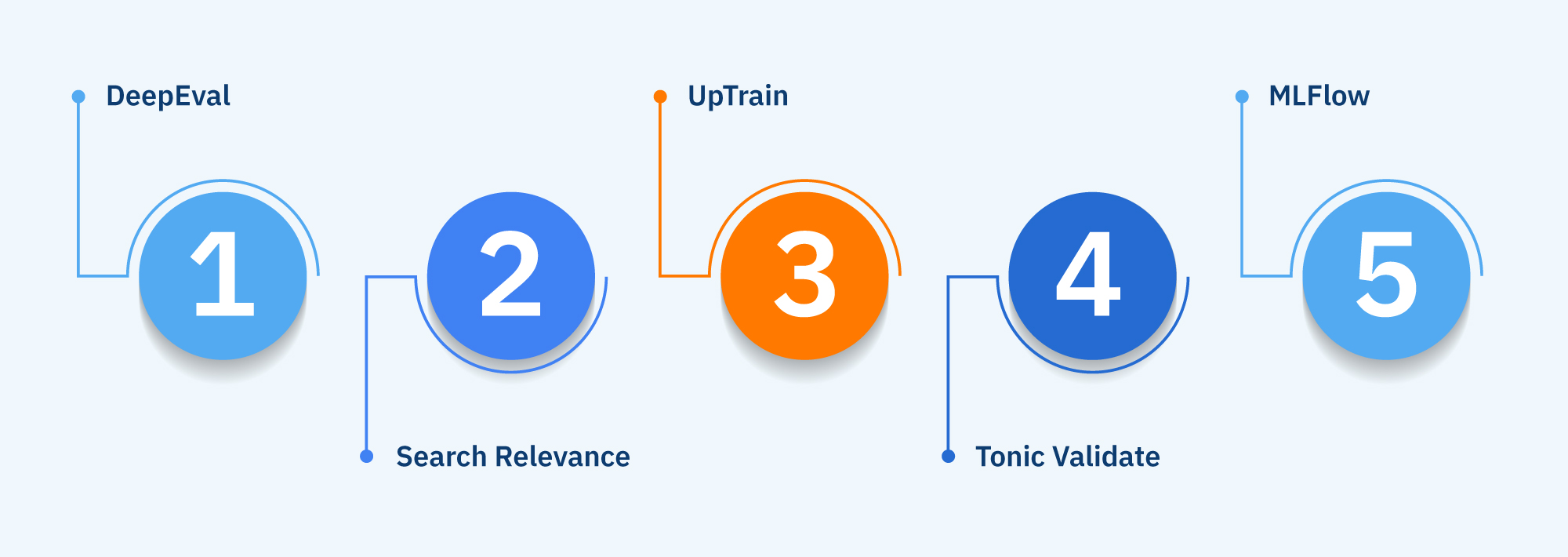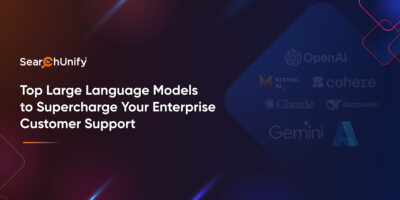
Large Language models (LLMs) have set the tech world ablaze with human-like text generation capability. Despite this breakthrough, LLMs’ limitations, such as limited context, hallucination, data privacy, and security, overshadow their advantages.
Enter RAG (Retrieval Augmented Generation), a cutting-edge technology to optimize LLMs, improving their accuracy and reliability through context awareness. It relies on factual data sourced from vector databases to generate accurate information and even provides reference points to validate the data. Pretty cool, right?
However, RAG doesn’t work well in all contexts, especially when capturing complex queries’ nuanced or specific contexts. Therefore, RAG optimization is essential. This blog post explains how to measure and evaluate RAG’s performance and discusses specific frameworks for optimization.
Let’s dive in!
Benchmarking RAG: Key Metrics for Performance Evaluation
You must have heard this saying, “If you can’t measure it, you can’t improve it.” This also applies to RAG. Knowing how well your RAG is working is far more complex; thus, evaluating its performance is the first strategic step for improvement.
Here are the following metrics to evaluate its performance:

Retrieval Metrics
In RAG, the response is generated from multiple search results, often through vector search, which leverages LLMs. RAG provides contexts to LLMs, and they generate answers based on that context.
So you’re committed to delivering what users seek. But how can you measure the effectiveness of the system and how well it is retrieving the information from massive datasets? Here’s where retrieval metrics— robust KPIs come into the picture.
Check out the top 5 metrics to keep in your RAG optimization toolbox.
- Precision: Measure what fraction of retrieved results are relevant. High precision signifies the system retrieving the most relevant content.
- Recall: Evaluate what proportion of relevant documents the system retrieved from all the relevant documents present in the datasets. A high recall value indicates that the system is good at finding relevant documents.
- F-score: Combine Precision and Recall into a single score. A good F-score means search results are highly relevant and accurate based on the user search query.
- NDCG (Normalized Discounted Cumulative Gain): Measure the retrieved document’s ranking quality by considering each document’s relevance score and its position in the ranking.
- MRR (Mean Reciprocal Rank): Calculate the average rank of the first relevant document in the retrieval list. For retrieval metrics, you require human expertise to curate a ground truth database (instances of “good” responses) to compare the retrieved results by RAG models.
Generation Metrics
Ever wonder how to assess if the generated answer is correct or not? Here a set of metrics that can help:
- Hallucinations: How factually accurate is the response compared to ground truth? Measures the presence of invented information.
- Entity Recall: How many of the entities mentioned in the ground truth appear in the generated response? Measures completeness, especially useful for summarization.
- Similarity: How similar are the ground truth and generated text? Assessed using metrics like BLEU, ROUGE, and METEOR.
- Generation Objectives: Additional considerations depending on use case, including safety, conciseness, and bias.
- Knowledge Retention: Evaluates LLM’s ability to remember and recall information from previous interactions, crucial for conversational interfaces.
Summarization Metrics
Summarization is one of the crucial applications of the RAG model. Following are some key metrics you can use for assessing generated summary:
- Compression ratio: Ratio of original text length to the summary length
- Coverage: Evaluate the percentage of crucial content captured in the summary from the original text.
Holistic Metrics
Holistic metrics provide a broader perspective on RAG performance. These metrics can measure the overall user experience using the system.
- Human evaluation: Assessing the quality of retrieval, generation, and summarization by humans based on relevance, coherence, fluency, and informativeness
- User satisfaction: Evaluate user satisfaction and overall RAG system performance by considering relevance and accuracy, ease of use, number of questions, and return/bounce rate.
- Latency: Measures the speed and efficiency of the RAG model, including how long it takes to retrieve, generate, and summarize responses.
5 Powerful Tools & Frameworks for Your RAG Optimization
Here are some tools and frameworks to help data scientists and developers for RAG optimization by gauge its performance. Let’s have a look.

- DeepEval: This robust tool combines RAGAs and G-Eval with other metrics and features. It also includes a user feedback interface, robust dataset management, and Langchain and Llamaindex integration for versatility.
- RAGAs: Evaluating and quantifying RAG performance is quite challenging; this is where RAGAs kick in. This framework helps assess your RAG pipelines and provides focused metrics for continual learning. Additionally, it offers straightforward deployment, helping to maintain and improve RAG performance with minimal complexity.
- UpTrain: An open-source platform that helps gauge and enhance your LLM applications provides scores for 20+ pre-configured evals (and has 40+ operators to help create custom ones). It also conducts root cause analysis on failure cases and presents in-depth insights.
- Tonic Validate: This is another open-source tool that offers various metrics and an uncluttered user interface, making it easy to navigate for users.
- MLFlow: MLFlow is a multifaceted MLOps platform that offers RAG evaluation as a single feature. It mainly leverages LLMS for RAG evaluation and is well-suited for broader machine-learning workflows.
In addition to these, other frameworks and tools are also available, monitoring real-time workloads in production and providing quality checks within the CI/CD pipeline.
SearchUnify’s SCORE Framework: The ultimate for Unmatched Accuracy & Contextually Accurate Information
RAG optimization is essential for delivering accurate and relevant information. However, implementing various metrics and frameworks for this seems like an uphill battle. But no worries, we’ve got you covered!
Introducing SearchUnify’s SCORE framework – a hybrid search approach that leverages the power of both keyword search and semantic similarities to deliver an exceptional search experience. Its features, like search precision, search recall, and handling complex and long-tail searches, effectively work with diverse datasets and allow customizable keyword and vector search weighting, making it an ultimate choice.
Want to experience the difference?













